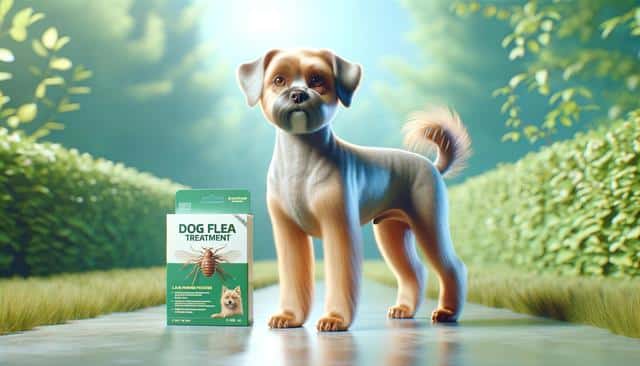
Your Guide to Year-Round Flea Prevention and Treatment for a Healthier, Happier Dog
Understanding the Flea Life Cycle
To effectively combat fleas, it’s crucial to understand their life cycle. Fleas are resilient and can thrive in various environments, leading to potential infestations if not properly managed. The flea life cycle consists of four stages: egg, larva, pupa, and adult. These stages can occur both on your dog and in their surroundings, such as bedding and carpets. By targeting all stages of the flea life cycle, you can ensure a comprehensive approach to flea prevention. Regular cleaning and vacuuming of areas where your dog spends time help minimize the likelihood of fleas developing and multiplying.
Year-Round Prevention Strategies
Flea prevention isn’t just a seasonal concern; it requires a year-round commitment to protect your dog’s health. Ensuring your dog is on a consistent flea prevention treatment plan is essential. Options range from topical treatments, oral medications to flea collars. Consult with your veterinarian to choose the most suitable method for your dog, considering factors like age, size, and health condition. Regular bathing with specially formulated flea shampoos can also be beneficial as a supplementary measure. Additionally, maintain a clean environment by washing pet bedding frequently and using flea control products in the home.
Choosing the Right Treatment
Selecting the appropriate flea treatment is vital for effective management. Each dog may respond differently to various treatments, so observing your dog’s behavior after application is important. Some of the popular options include:
- Topical treatments: Applied directly to the skin, these offer protection for up to a month.
- Oral medications: These work from within and are often favored for their convenience and effectiveness.
- Flea collars: Long-lasting and ideal for ensuring continuous protection.
Before choosing a product, review the ingredients and ensure they are safe for your dog’s breed and age. Consulting your veterinarian will provide guidance tailored to your pet’s specific needs.
Natural Remedies and Alternatives
For those who prefer natural approaches, there are several remedies that can help deter fleas. Essential oils, such as lavender and eucalyptus, have repellent properties. However, they should be used with caution and diluted properly to avoid irritation. Homemade flea sprays using vinegar and water can also be effective in repelling fleas. Be sure to test any natural solution on a small area of your dog’s skin to monitor for any adverse reactions. Additionally, maintaining a diet rich in nutrients and including supplements like brewer’s yeast can potentially make your dog less appealing to fleas.
Monitoring and Maintenance
Regular monitoring of your dog’s skin and coat is crucial in preventing flea infestations. Check for signs such as excessive scratching, red bumps, or flea dirt. Promptly addressing these symptoms can prevent further complications and discomfort for your pet. Routine veterinary check-ups are essential to catch any issues early and adjust prevention tactics as needed. By maintaining vigilance and consistency in your flea prevention efforts, you can ensure your dog enjoys a happy, comfortable life free from the nuisance of fleas.
Conclusion
In conclusion, a proactive and informed approach to flea prevention and treatment is essential for your dog’s health and happiness. By implementing year-round strategies, choosing effective treatments, and considering natural alternatives, you can ensure that fleas remain a minimal concern. Consistent care and attention to your dog’s needs will pave the way for a flea-free and enjoyable life for your beloved pet.